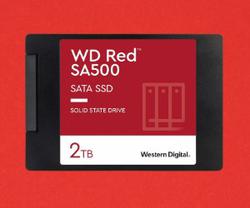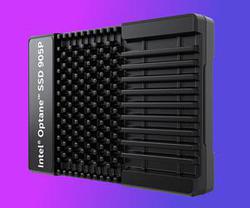In the era of HDDs, selecting a drive was straightforward—simply consider capacity, RPM, and brand. However, with SSDs, the decision is much more complex, especially when used in a server for critical data processing.
Choosing the wrong interface can create a bottleneck, hindering overall system performance and affecting application efficiency. Additionally, an SSD with a low endurance rating might fail after just a few months of use.
To help you make an informed choice, I’ve researched the current market and compiled a list of the best server SSDs for September 2024. This guide also highlights key features you should prioritize in your selection.
Western Digital Red SA500
The Western Digital Red SA500 is an SSD optimized for NAS systems, providing quick access to commonly used files, exceptional durability for round-the-clock reliability, and top-notch SATA performance due to Western Digital's reliable 3D NAND technology. It aims to enhance responsiveness across a range of applications such as databases, multi-user settings, and video editing.
INTEL OPTANE SSD 905P
Intel Optane SSDs with 3D XPoint technology are highly durable, capable of writing tens of petabytes of data, and excel at random memory requests with speeds of up to 575,000/550,000 IOPS for reads and writes. The Optane SSD 905P is ideal for write-intensive workloads, offering high quality of service and responsiveness.
### Best SSD for Server: Buyer's Guide
When searching for the ideal SSD for a server, several factors can significantly influence your overall experience. Let’s explore what to consider before making a purchase.
#### How to Choose a Server SSD
We’ve already touched on interfaces, endurance, and performance in various scenarios. Now, let’s delve deeper into these aspects. Here are key considerations when selecting an SSD for your server:
**Form Factor**
The compact size of flash memory chips allows SSDs to be available in various shapes and sizes to meet user needs. The form factor affects the drive's shape and dimensions, with the most common types being:
- **2.5" (or U.2)**
This small form factor (SFF) variant is standard for NVMe drives. The dimensions are consistent in length and width, while height ranges from 7mm to 15mm depending on capacity and cooling solutions.
- **Add-in Card (AIC)**
Sometimes referred to as HHHL (half height, half length), this SSD connects directly to a PCIe slot on the motherboard. AICs utilize more PCI Express lanes, allowing for better heat dissipation and increased performance. However, these drives are not hot-swappable.
- **M.2**
M.2 drives are compact and often used in server hardware, though most motherboards typically have only one or two M.2 slots. These stick-shaped drives can be effective for operating system loading or caching.
### Interface
The interface, or logical protocol, dictates how the SSD communicates with the CPU. Different form factors can utilize the same interface, but the following are commonly found in servers:
- **SATA**
SATA is popular in the budget segment, offering data transfer rates of up to 560 MB/s for sequential operations. However, this interface is a performance bottleneck and contributes to higher latency, making it less suitable for demanding applications.
- **SAS**
SAS is the established standard for enterprise storage, favored for its scalability and higher bandwidth. For instance, 12Gb/s SAS can deliver up to 1GB/s on each of its two links. Its dual-port capability enhances fault tolerance by allowing a single drive to connect to two servers, ensuring data access even if one server fails. Note that SAS drives require a special host bus adapter (HBA) or RAID controller, and while SAS can support SATA drives, the reverse is not true.
- **NVMe**
NVMe connects the SSD directly to the PCIe bus, which may be linked to the CPU or the chipset. This connection significantly reduces latency (to just a few microseconds), with data transfer speeds determined by the memory's characteristics. When selecting an NVMe SSD, check the supported version of the PCI Express standard: PCIe 3.0 offers up to 1 GB/s per lane (or 4 GB/s for a "x4 Gen 3" slot), while PCIe 4.0 doubles that speed.
### Types of Flash Memory
SSDs store data on flash memory chips, commonly known as NAND. Initially, each cell held just one bit (0 or 1), with SLC (Single-Level Cell) memory providing high speeds but low density and high manufacturing costs. This led to the development of various technologies that allow different levels of cell charge to represent multiple bits, though this reduces durability since cells have a limited lifespan and more bits mean more frequent overwrites.
Here are the main types of memory found in modern SSDs:
- **MLC (Multi-Layer Cell)**: Each cell stores two bits. MLC offers high speed and reliability but is less common due to its cost.
- **TLC (Triple-Level Cell)**: The most widely used type, TLC stores three bits per cell. It has slower write speeds and shorter lifespan compared to MLC, but it makes SSDs more affordable.
- **QLC (Quad-Level Cell)**: This emerging technology stores four bits per cell. Due to lower endurance, QLC is currently limited to consumer SSDs.
Additionally, there are Intel Optane drives that use 3D XPoint memory. These drives feature a crosspoint architecture for addressing individual cells, storing only one bit of data each. They offer speed and durability, although their high price remains a significant drawback.




%20work%20in%20AWS.jpeg)







